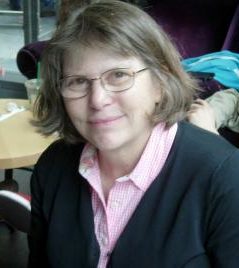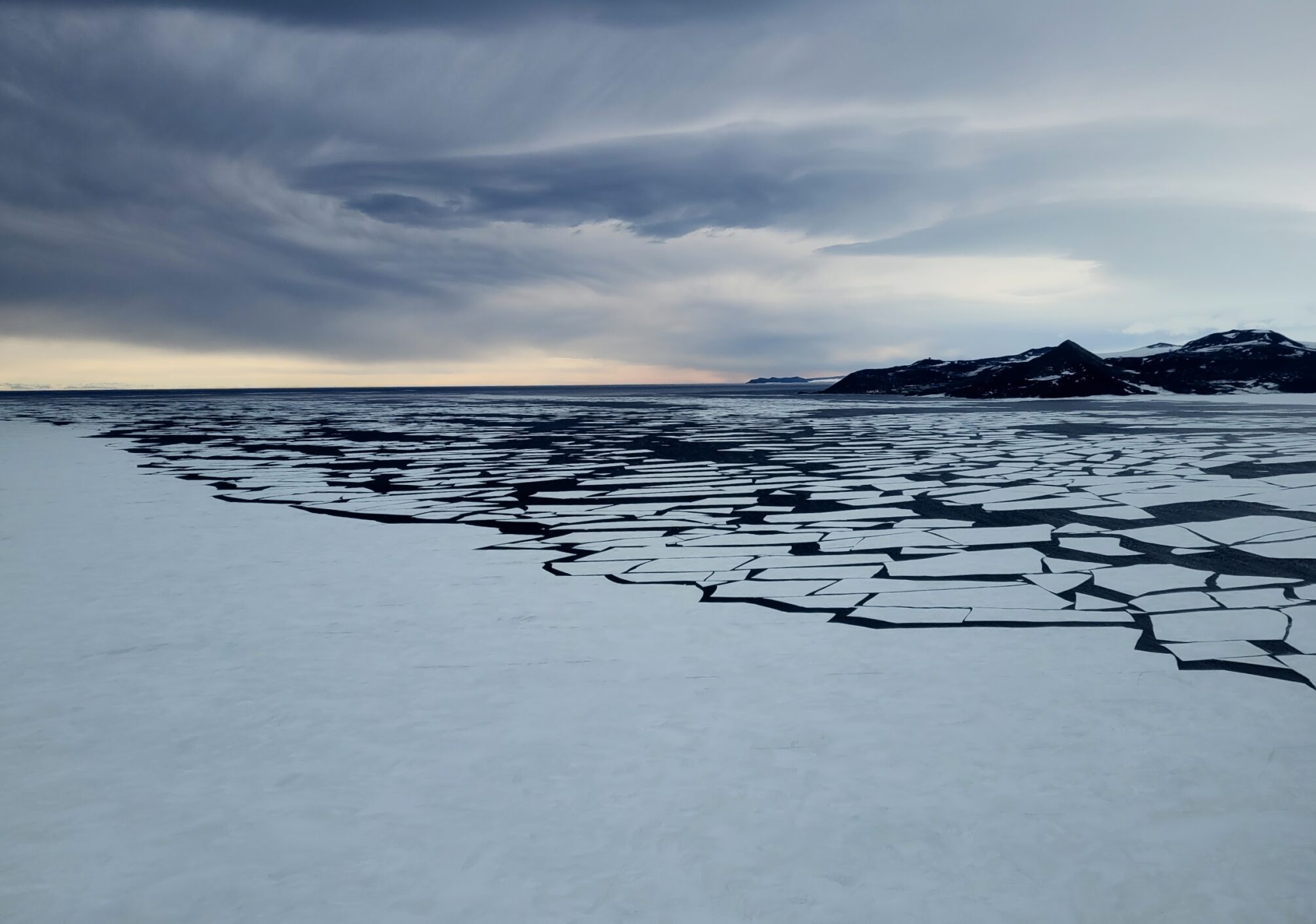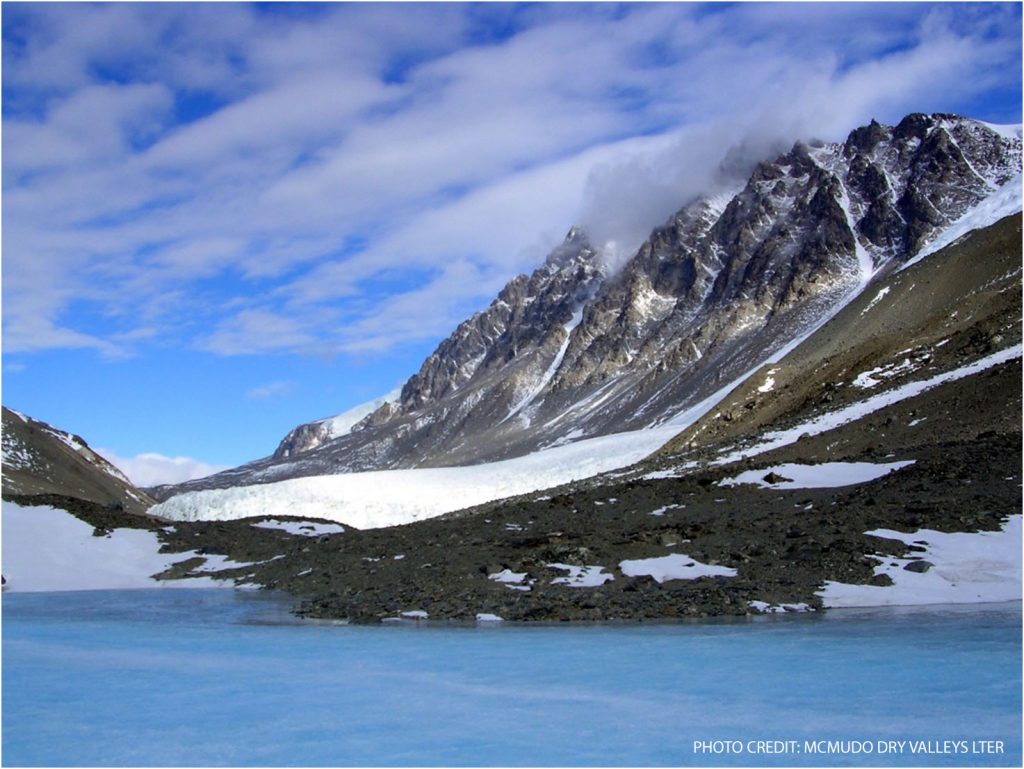
Credit: University of Colorado, Boulder
Diane McKnight has been an integral figure to the LTER for decades, culminating in her stint as the LTER Executive Board Chair. Her four-year tenure ended at this year’s Science Council Meeting at the Kellogg Biological Station, where she officially passed the gavel to Evelyn Gaiser.
McKnight was instrumental in launching the McMurdo LTER, spearheaded the “McKnight report” on restructuring network coordination, and served four years as Chair of the LTER Network Executive Board. She’s mentored dozens of students and developed too many projects to count. As an environmental engineer, she brings a pragmatic, problem-solving perspective to both science and network operations. The LTER Network Office sat down with Diane to chat about her life in the Network, the things she’s learned, and her dreams for the LTER moving forward.
The following interview is edited for length and clarity. Diane’s opinions do not necessarily represent the views of the National Science Foundation or the LTER Network Office.

LTER Network News (LNN):How did you get involved in the LTER?
Diane McKnight: “I was on the proposal zero [for the McMurdo Dry Valleys LTER program] that didn’t get funded. This was before microbial observatories, before microbes were viewed to be organisms that even had ecology. And McMurdo has all these lakes full of microbes, microbial mats in the streams and almost no flora or fauna.
One of the reviewers said this would be as interesting as studying a pet rock. We knew we were the underdog going into the second opportunity in 1992 to submit another proposal.
When we weren’t funded, Gene Likens,who had been on our advisory committee and had studied the lakes early in his career, as well as being the founder of the Hubbard Brook LTER, said, “Diane, what can I do to help you all?” He suggested that he host a workshop at the Cary Institute in Millbrook, NY, knowing that many of his colleagues from the early days, including John Hobbie and Charles Golman, would come and that the LTER program officers might show up, too.
Robert Wharton, the first MCM-LTER PI, organized a wonderful workshop. And, in the time since our initial proposal, our colleagues Diana Wall and Ross Virginia had discovered nematodes in the soils! Suddenly we went from being this weird group studying microbes to totally connected with the history of ecology.
When we were funded, we were thrilled to be able to study the Dry Valleys as they were changing. We could see the lakes rising. The stream flow would go up and then the next summer would go down. These are really dynamic systems.
LNN: What are some of the most impactful changes you’ve seen at the LTER?
Diane McKnight: One of the big ways in which the LTER has changed is there’s a lot of younger scientists who are very excited about analyzing long term data.
It’s exciting to be in this interdisciplinary setting in the field together. Many younger scientists are R-wizards. They know how to walk in the door and do a mixed model of this and that. I look at a long term dataset, and I’m scratching my head, “Well, I can sort of see patterns here…,” and they know how to dive in.
The other development I’ve seen is the rise in sophistication of information management and the power of databases. With the first McMurdo database, we had some challenges. At first, we were sending each other floppy disks, and we would say, “here’s the streamflow that you need to analyze your stream chemistry data.” We were mailing a floppy disk!
Then we started building a single database as a relational database, which was so important for McMurdo because we have these 15 minute streamflow measurements and they need to link up with discrete samples and continuous meteorological data.
Now, there is this huge array of data at high frequency in time and at high spatial resolution, and that’s just exploded. How will these data be processed, archived and understood? It’s become an expanding challenge. And at the same time, we have so much more capability to effectively store data.

LNN: What’s the biggest value of the LTER?
Diane McKnight: The greatest value in field research can be discovering the unexpected. You need to plan and organize what you’re doing in the field so that you can recognize the surprises. The LTER has got that down. That’s the strength of a site-based hypothesis. In the traditional account of the scientific method, you’re going to have a hypothesis, you’re going to test it, and then you cycle back. If your hypothesis is wrong, you’re going to develop a new hypothesis and keep going. But in our science, we can’t time travel, right?
Well, if we don’t know why we’re wrong because we haven’t measured other parameters that could tell us why that hypothesis wasn’t right, we could be out of luck.
I think in the LTER, because of the diversity of the five core areas and everything else that’s being measured and all the continuous monitoring, we don’t need to time travel to succeed. A great example of this is the emphasis on understanding disturbance. It’s one of the core areas. If you’re going to understand disturbance, you had better be prepared!
LNN: Where is your hope for the LTER in the future?
Diane McKnight: I would like to see NSF’s engineering directorate look into supporting two new LTERs [in Environmental Engineering]. There are a number of exciting topics that would not involve a a change the core areas to do this. Nutrients and disturbance and biodiversity and organic matter—you can study those from an engineering perspective.
Nutrient pollution and climate-related disturbance are real issues for many communities. The LTER could impact communities both globally and locally more directly. In terms of the younger scientists, there’s a lot of excitement about understanding change, but also about bringing into the research a pragmatic, can do, we can deal with it, here is something constructive, attitude. Studying a few new sites in this context would link to the urban sites and be a bridge across the network. Plus, I have argued that it could also be an important way to enhance the diversity in the student, grad student, and post-doc communities. My experience is that the students and faculty are generally from more diverse backgrounds in environmental engineering. This impact could work its way up within the LTER.
Also, when I came in as chair, I advocated that we needed to elevate the Diversity Committee to more than an ad-hoc committee. We needed to make it a strong standing committee with representatives from every LTER site. And I was so glad that there was so much support for that both at the Network Office and across the Lead PI’s. I hope that work will continue and grow.










